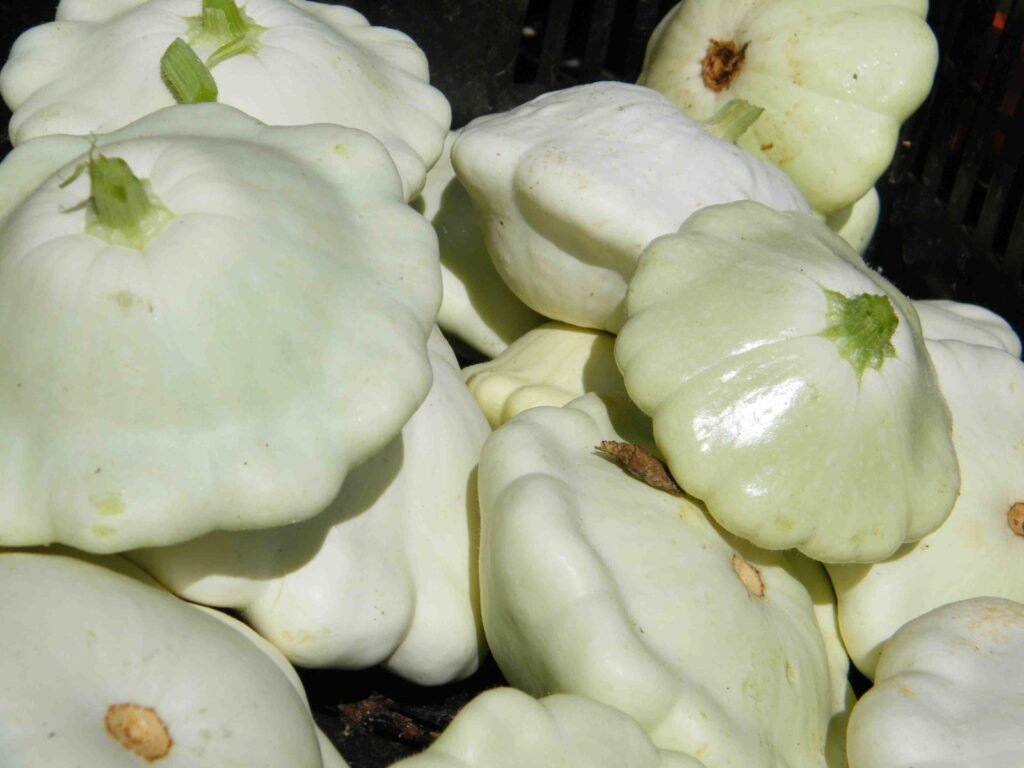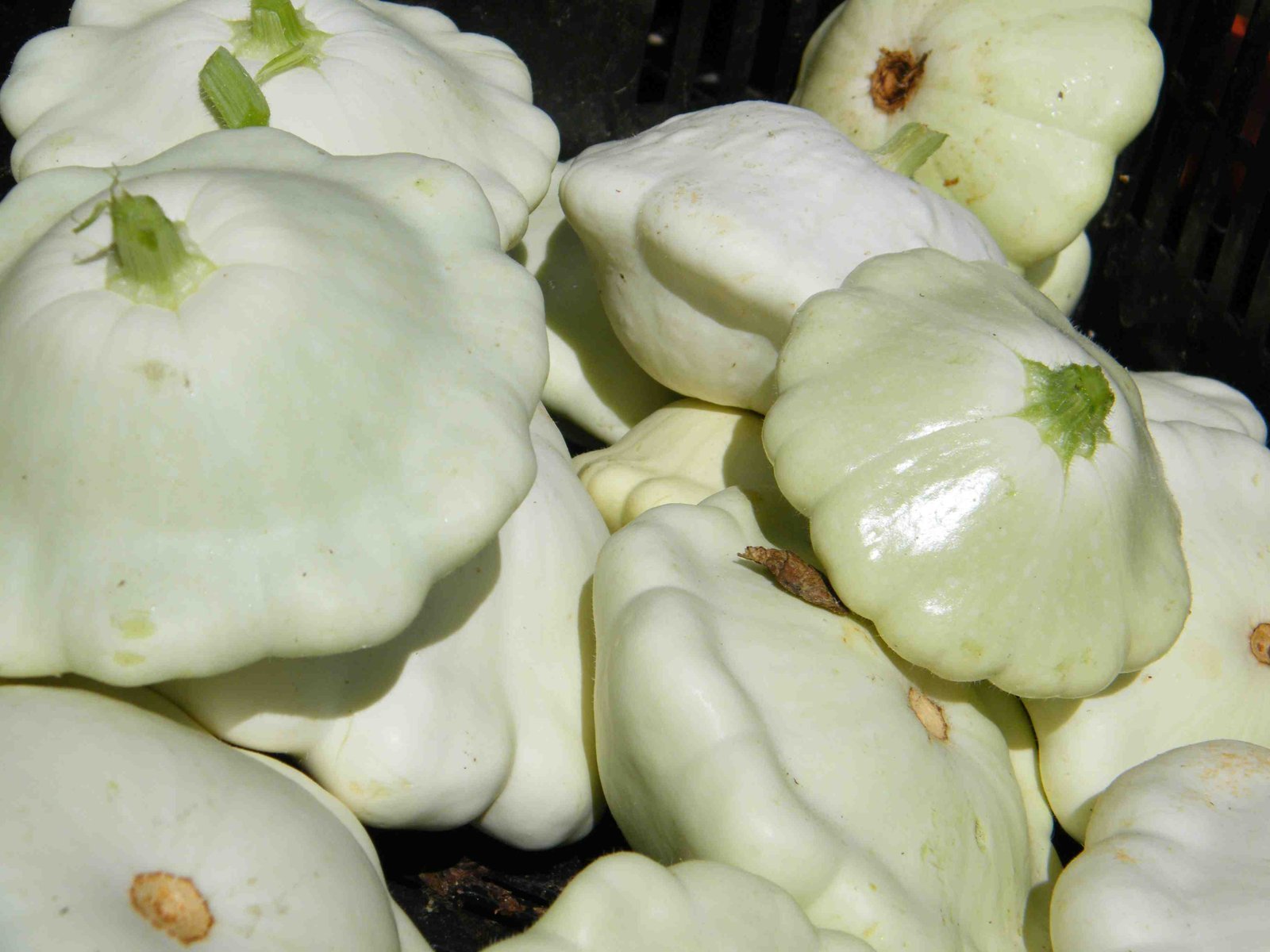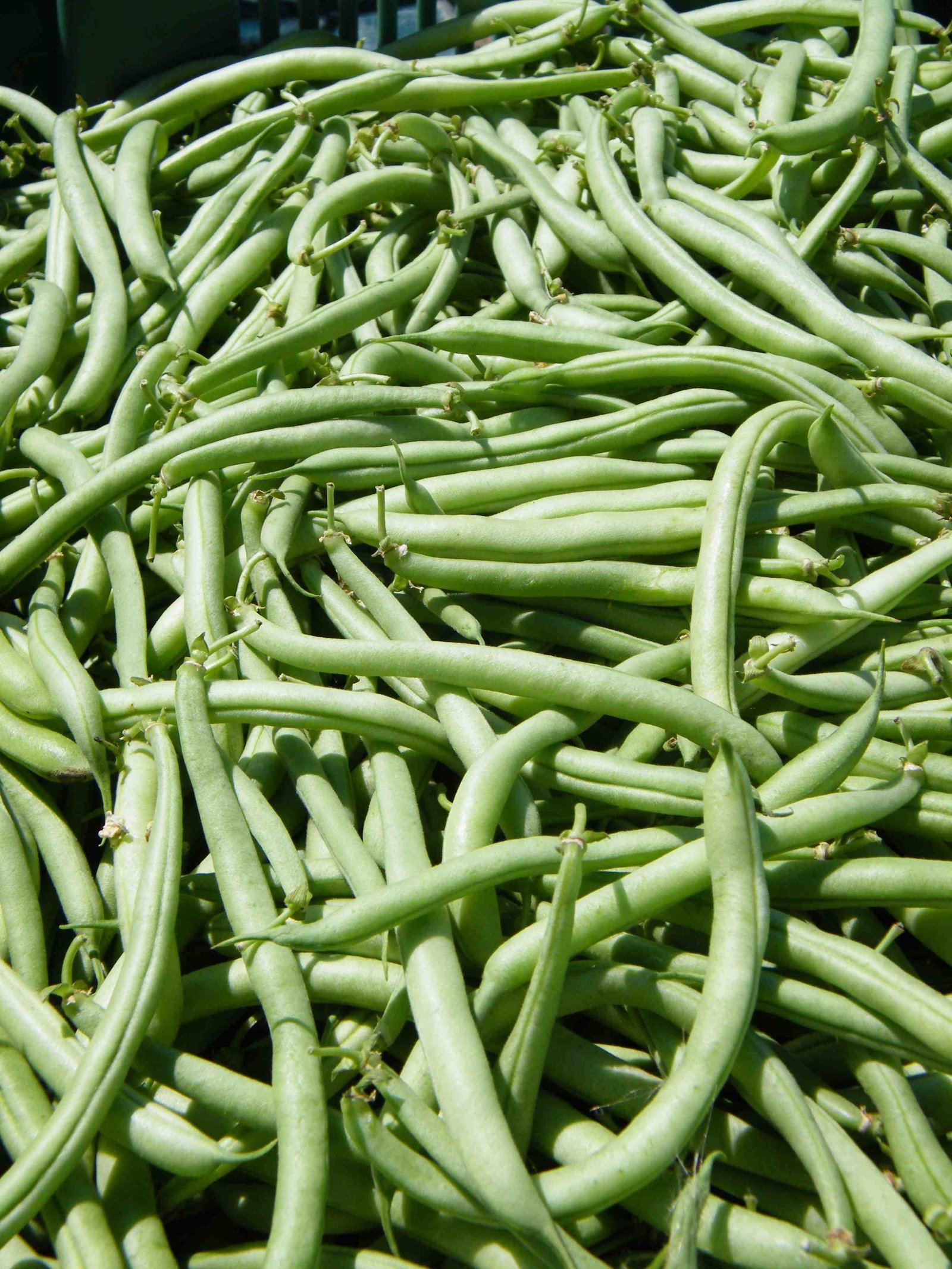
By now you may have noticed that the vegetables you receive in your CSA share box don’t always look like the vegetables on the shelves at the grocery store. Our “specs” are a bit looser than those growers who grow 10 acres of the same crop. Our peppers might not always have four lobes, our cucumbers may be misshapen, and our carrots may vary in size greatly. Sure, a green bean is a green bean and maybe a head of cabbage is a head of cabbage, but my job here is to do the best I can to teach you to appreciate the imperfections, the irregularities and the differing crop varieties that we may grow when compared to grocery store food. Because I too have a tendency from time to time to compare our produce to that which comes from Silicon Valley, CA and it’s a bit like comparing bicycles to motorcycles.
As CSA farmers we attempt to grow over 70-plus different varieties of food to supply our members with 20 consecutive weeks of produce boxes that contain at least 10 different types of vegetables within each delivery. In short, we attempt to “do it all”. When you buy carrots from California, your California carrot farmers have 75 acres of just carrots. These carrot farmers can afford to throw away all the carrots that don’t have the right length, diameter or color. Even my neighbor who is a commercial organic swiss chard, cilantro and parsley farmer is unable to sell his crops at all if he cannot meet the high quality standards of the wholesale market or if his cilantro has white spots on it or if his chard has red spots on it or if his parsley isn’t tall enough. To get perfect looking produce on the grocery store shelves it often times means that ¾ of the crop had to go to waste so that ¼ of the crop could be sold.  Patty Pan Summer Squash
Patty Pan Summer Squash
As widely diversified small scale farmers with a passion for providing fresh, local, organically grown produce to our surrounding community, we are willing to work really hard for celery that will never look like the white, perfect California celery. We strive for beautiful looking food, but because we’re growing so many different kinds of vegetables, it can become challenging to do everything well. We’re willing to continue to try to grow cauliflower even though it wants to turn yellow or purple under moisture and heat stress. And if you think that that our celery and cauliflower look funky, just wait until you see our heirloom tomatoes! No, no, just wait until you taste our heirloom tomatoes! So much of the flavor, shelf-life and character are bred out of vegetable varieties so that they can sit pretty, perfect and packaged on produce isle shelves. Know that your food that comes from this farm has style, richness, depth. It has meaning, worth, a story and a face on it. Your food came from our farm…from your farm!
Which image of your food would you like to have in your mind: 25 acres of carrots or 7 acres of a widely diversified small scale family farm? When we think of where our food comes from we like to imagine it coming from a place where workers are treated fairly, the farmers feed their soils and not their plants and animals are grazing happily across bright green grassy hillsides. We think of children and family and community when we think of where our food comes from. Thank you for supporting a small family farm in all of its inadequacies while the reality, the image and the true small family farms are rapidly disappearing.
Green Cabbage- Huge heads of cabbage this week! Cabbage will keep for over a month in a fridge in a plastic bag to preserve moisture. But don’t let it sit that long, because you’re bound to get another cabbage before too long!
Red Beets- These dark red beauties make a wonderful cold salad. Beets will also store for over a month if kept in a plastic bag in the fridge to preserve moisture.  Green Beans Galore
Green Beans Galore
Tango Celery- The celery is starting to turn on us quickly. We were having to cut the centers out of the heads to salvage all that is good on them still. We found that their outside stalks all looked really nice to eat, but we had to cut out the centers. Locally grown celery has a darker green color, and sweeter and stronger celery flavor and has more leaves on it. We did trim the tops off them to prevent from giving too many leaves. Use the leaves of the celery in soup, stocks, or dry them down in your dehydrator to use the leaves as flavoring to your winter dishes. I have truly grown to love local celery!
Green Beans- Green bean picking will consume a remarkable amount of time. We spent a very healthy number of hours picking beans this week. There was more there to pick, but time was our limitation!
Green Pepper- Peppers are really starting to come now. We normally only plant red, yellow and orange peppers, but we will pick them while they are still green in some cases so that we can start giving you peppers now! Such a fun new flavor!
Cucumbers- Cucumber production seems to be waning now. This just has not been our best year for cucumbers. We lost a good portion of them right from transplant, but still a few cukes every week to every member is not bad!
Yellow Summer Squash, Zucchini and Patty Pan Squash- I think that squash production is finally waning. The plants are starting to turn a little yellow and they’re looking a little tattered. The zucchinis are still going quite strong, but we’ve noticed that we’re getting less and less each time we harvest.
White and Red Bunching Onions- This will be our final bunching onion giving this week. Starting next week we’ll be able to start sending whole onions. Enjoy eating the tops while you still have them!
Asian Tempest Garlic- This garlic variety may be a bit more spicy than other varieties. It may not be completely cured down quite yet either. Your garlic will keep on your countertop to finish the curing process or you could store it in your fridge. When garlic is finished curing it prefers a cool, dark and dry environment.
Fresh Sweet Basil- Large bunches of sweet basil this week for those of you who have been craving pesto! If you don’t plan on making pesto, pluck the leaves from the stems and allow the leaves to dry in your dehydrator, crumple them into a jar and store with a tight lid for winter use!  Sun Gold Cherry Tomatoes are orange when ripe!
Sun Gold Cherry Tomatoes are orange when ripe!
Tomatoes- Okay, we didn’t even think we were going to be able to give tomatoes this week, but we picked exactly 275 tomatoes. We tried to give everyone one large tomato or two smaller tomatoes. We also picked 14 pints of Sun Gold cherry tomatoes which are the sweetest little orange cherry tomatoes you’ve ever tasted-so if you received these know that they are orange when they are ripe, do not wait for them to turn red because they will never turn red. Your tomatoes may be yellow, orange, purple, pink or red when the are ripe, but most of all you are looking for the softness of a ripe tomato. When we harvest tomatoes, we pick everything with a “blush” on it or anything that is showing the first signs of ripening. Once a tomato starts to ‘blush’ it will ripen quickly outside of refrigeration within a week. If you received a tomato that does not feel or look ripe, simply allow it to sit on your windowsil or countertop at room temp and it will slowly turn ripe. Refrigeration will prevent under-ripe tomatoes from turning ripe. We also believe that refrigeration takes flavor from a tomato, so allow it to ripen at room temperature and you will still be blessed with all the flavor and goodness of a vine ripened tomato. Please understand that we need to pick them slightly under-ripe or else they will not be able to make it to you in whole form.